Jazz-Precision Hybrid Style Bass Guitar Build
Included here are additional photos from yet another Jazz Style Bass Guitar (1) build for a different client. The modification here is in the pickup configuration. The upper or neck pickup will be a split Precision bass type pickup while the lower or bridge pickup will be the single in-line Jazz pickup.
Between these photos and instructions and those posted in the 'Railway' Jazz Bass Guitar build, one can get a fairly good idea of the processes in the construction of this type of Bass Guitar.
Principles here can generally be applied to any solid body Bass Guitar build and only modifications and adjustments must be made for variations in hardware, number of strings etc.
Between these photos and instructions and those posted in the 'Railway' Jazz Bass Guitar build, one can get a fairly good idea of the processes in the construction of this type of Bass Guitar.
Principles here can generally be applied to any solid body Bass Guitar build and only modifications and adjustments must be made for variations in hardware, number of strings etc.
* * *

Canadian Maple was selected as Maple or Ash are the traditional woods used by Fender in the construction of Jazz & Precision Style Bass Guitars. Here the wood is sent through a planer in order to remove surface scuff marks and defects as well as to bring it down to near the thickness of the finished body. Additional wood is removed by sanding but then again built up by the layers of finish.

The wood planed (above) is cut to size and glued together taking into consideration the end grain orientation. One piece wood (unjoined bodies) can be found but this sized planks come at a premium price and may be subject to greater warping. The sides of the wooden planks having been make perfectly flat by passing them through a jointer. Sides can just be glued and clamped or dowels and biscuits can be used to reinforce the joint. Usually the upper and lower horns of a guitar will differ in length and wood can be conserved by cutting the two sides to be joined to different lengths.
 Here loose hardware intended for the finished Bass Guitar are piled on top of a fiberboard (masonite) template previously made for such projects.
Here loose hardware intended for the finished Bass Guitar are piled on top of a fiberboard (masonite) template previously made for such projects. 
The Fiberboard template placed on top of the Maple Body Blank onto which the pattern will be traced.
 Traced pattern on blank is sawn out on a band saw. The cut is made outside the lines then carefully sanded to the exact dimension, Here the body is sawn out prior to routing out the hardware cavities and electronics bays. Although this method can yield excellent results, it may be preferable to route out the body cavities prior to cutting as the extra wood serves as a "table" on which the router bass plate can ride with greater stability.
Traced pattern on blank is sawn out on a band saw. The cut is made outside the lines then carefully sanded to the exact dimension, Here the body is sawn out prior to routing out the hardware cavities and electronics bays. Although this method can yield excellent results, it may be preferable to route out the body cavities prior to cutting as the extra wood serves as a "table" on which the router bass plate can ride with greater stability. Here the body is sanded with a dedicated surface drum sander. This can be easily accomplished by hand using anything from a block and loose sandpaper to a variety of portable hand sanders.
Here the body is sanded with a dedicated surface drum sander. This can be easily accomplished by hand using anything from a block and loose sandpaper to a variety of portable hand sanders. The edges are sanded on an oscillating spindle sander making them square to the faces. Again, this can be accomplished by the same hand sanders listed above. A piece of sandpaper wrapped around various diameter items, broom handle, tin can etc., can reach the inside of various curves.
The edges are sanded on an oscillating spindle sander making them square to the faces. Again, this can be accomplished by the same hand sanders listed above. A piece of sandpaper wrapped around various diameter items, broom handle, tin can etc., can reach the inside of various curves. An initial relief is given to the square edges with a roundover bit. A 1/2" roundover router bit is usually sufficient to accomplish this. This just makes work faster. Hand tools such as rasps, files, planes and spoke shaves can accomplish the same. Be cautious when working around the area where the neck pocket will be placed.
An initial relief is given to the square edges with a roundover bit. A 1/2" roundover router bit is usually sufficient to accomplish this. This just makes work faster. Hand tools such as rasps, files, planes and spoke shaves can accomplish the same. Be cautious when working around the area where the neck pocket will be placed. Note the grain orientation on the joined pieces. Grain orientation is important asethtically if the body is not painted but just stain and clear-coated. Grain orientation is very important for structural integrity as it will minimize warping and make any expansionion or contraction equal.
Note the grain orientation on the joined pieces. Grain orientation is important asethtically if the body is not painted but just stain and clear-coated. Grain orientation is very important for structural integrity as it will minimize warping and make any expansionion or contraction equal. Here templates of jigs of pick-ups are placed onto the bass body indicating their placement. The straight edge template router bit's upper bearing follows the outline guiding the router & cutter in cutting out the pick-up's cavity. Here there is a home made template lying flat on the body. It was made by tracing the pick-up onto some scrap wallboard and cutting out with drills, jig saw, utility knives or files. Use whatever works. Smooth with sandpaper as an accurate jig will give the tightest and most professional looking cut. This is important if there is no pickguard used. A pickguard will hide errors. Standing perpendicular to the body on top of the wooden template is a plexiglas template. Both accomplish the same result.
Here templates of jigs of pick-ups are placed onto the bass body indicating their placement. The straight edge template router bit's upper bearing follows the outline guiding the router & cutter in cutting out the pick-up's cavity. Here there is a home made template lying flat on the body. It was made by tracing the pick-up onto some scrap wallboard and cutting out with drills, jig saw, utility knives or files. Use whatever works. Smooth with sandpaper as an accurate jig will give the tightest and most professional looking cut. This is important if there is no pickguard used. A pickguard will hide errors. Standing perpendicular to the body on top of the wooden template is a plexiglas template. Both accomplish the same result. More severe contours can be cut into the body using a variety of tools such as an angle grinder with a carbide wheel, micro razor rasps and traditional wooden rasps. Again, planes, spoke shaves and electric hand drills with sanding discs can also accomplish the job. Use what is at hand.
More severe contours can be cut into the body using a variety of tools such as an angle grinder with a carbide wheel, micro razor rasps and traditional wooden rasps. Again, planes, spoke shaves and electric hand drills with sanding discs can also accomplish the job. Use what is at hand. As above but the lighting better illuminating the roughly cut relief made with the carbide angle grinder.
As above but the lighting better illuminating the roughly cut relief made with the carbide angle grinder. A variety of sanders are shown in the background starting with (left to right) a three headed contour sander, a variable oscillating rotary sander, a 1/4 sandpaper sheet palm sander, a hand drill with a disc sander attachement and finally a portable belt sander. A pleasant afternoon sanding the body by hand will also yield great results. Sand with (not against) the grain pattern and work with progressively finer grits from 80 if necessary, then 100. 120, 180 and 220. Any finer grits will polish the wood and make it too smooth for the primer to take. A damp cloth can be used to wipe down the body between sandpaper grits to remove the dust and also to slightly raise the grain. The next finer grit of sandpaper will shear off the raised grain and the final result will be smoother than with just straight sanding. Make sure the wood is perfectly dry especially if the finish will be an oil or spirit based finish as opposed to a water based finish.
A variety of sanders are shown in the background starting with (left to right) a three headed contour sander, a variable oscillating rotary sander, a 1/4 sandpaper sheet palm sander, a hand drill with a disc sander attachement and finally a portable belt sander. A pleasant afternoon sanding the body by hand will also yield great results. Sand with (not against) the grain pattern and work with progressively finer grits from 80 if necessary, then 100. 120, 180 and 220. Any finer grits will polish the wood and make it too smooth for the primer to take. A damp cloth can be used to wipe down the body between sandpaper grits to remove the dust and also to slightly raise the grain. The next finer grit of sandpaper will shear off the raised grain and the final result will be smoother than with just straight sanding. Make sure the wood is perfectly dry especially if the finish will be an oil or spirit based finish as opposed to a water based finish. Checking the pickguard & chrome electronics bay cover against the rough body.
Checking the pickguard & chrome electronics bay cover against the rough body.Two Forstner bits lie on the left side of the photo.
 Forstner Bits (think of large flat bottomed drills) lie on top of body. Forster bit diameters are chosen depending on diameter of of the cavity you wish to cut. The idea is this: In order to cut out a cavity in hardwood, much of the preliminary work can be done by drilling out the wood. The drill press is ideal for this as it is fast and stops can be set for accurate depths. One the majority of the wood is removed, the remainder can be removed with a straight cut template bit on a router. The drill press does the majority of the work and the router cleans up what the forstner bits have left behind. This places less stress as well as wear and tear on both the router motor & bearings as well as the bit.
Forstner Bits (think of large flat bottomed drills) lie on top of body. Forster bit diameters are chosen depending on diameter of of the cavity you wish to cut. The idea is this: In order to cut out a cavity in hardwood, much of the preliminary work can be done by drilling out the wood. The drill press is ideal for this as it is fast and stops can be set for accurate depths. One the majority of the wood is removed, the remainder can be removed with a straight cut template bit on a router. The drill press does the majority of the work and the router cleans up what the forstner bits have left behind. This places less stress as well as wear and tear on both the router motor & bearings as well as the bit. This photo illustrates the sequential holes having been drilled into the body creating the electronics bay cavity.
This photo illustrates the sequential holes having been drilled into the body creating the electronics bay cavity. A fiberboard (masonite) template for the cavity desired is attached to the body with double sided sticky tape. The router equipped with a straight template bit can now follow the template and "square up" the hole left by the forstner bits.
A fiberboard (masonite) template for the cavity desired is attached to the body with double sided sticky tape. The router equipped with a straight template bit can now follow the template and "square up" the hole left by the forstner bits.This larger square cavity is hidden by the pickguard and therefore is easier and quicker to cut than the bridge pickup cavity which is the exact shape of the pickup itself. This also allows a choice of pickup styles to be placed in this location without modification. An in-line Jazz pickup or a split Precision bass pickup can be installed as desired or requested.
 The square cavity for the pick-up is shown after cleaning out with the straight edge router template bit which can be seen in the router on the upper right.
The square cavity for the pick-up is shown after cleaning out with the straight edge router template bit which can be seen in the router on the upper right. Pick-up & tailpiece router templates are shown to see how things are coming together. On the right a template can be seen on a scrap piece of wood used to test a cut.
Pick-up & tailpiece router templates are shown to see how things are coming together. On the right a template can be seen on a scrap piece of wood used to test a cut.* * *
Construction of the Bass Guitar Neck

Maple stock on table saw which will be used in building the Bass Guitar neck.
 Neck stock on band saw equipped with a 5/8" blade with (?) TPI (2) and fence used to re-saw the maple to the thickness required for neck construction. As the maple is the primary structural wood used in the neck this will be the thickest component while other contrasting woods are primarily used for aesthetic purposes and can be thinner. The wood here is lying flat on the saw table but will be fed through standing perpendicular to the table.
Neck stock on band saw equipped with a 5/8" blade with (?) TPI (2) and fence used to re-saw the maple to the thickness required for neck construction. As the maple is the primary structural wood used in the neck this will be the thickest component while other contrasting woods are primarily used for aesthetic purposes and can be thinner. The wood here is lying flat on the saw table but will be fed through standing perpendicular to the table. Here are the various laminate components ready for assembly. On the outside is the thicker rock maple which is the major component of the neck. Inside of the maple are two thinner sections of a contrasting wood (species eludes me at this time) and the center strip is again maple. The thickness and arrangement is determined by the aesthetics the builder is looking to achieve as long as the strength and width of the neck is taken into consideration. There is an ongoing debate as to whether flat sawn or quarter sawn wood is superior in strength and sound.
Here are the various laminate components ready for assembly. On the outside is the thicker rock maple which is the major component of the neck. Inside of the maple are two thinner sections of a contrasting wood (species eludes me at this time) and the center strip is again maple. The thickness and arrangement is determined by the aesthetics the builder is looking to achieve as long as the strength and width of the neck is taken into consideration. There is an ongoing debate as to whether flat sawn or quarter sawn wood is superior in strength and sound. Components for the neck are sent through the stationary drum sander to ensure a flat surface for gluing. A true surface produces a barely visible glue line resulting in a more pleasing looking neck. The same procedure can be accomplished by hand sanding or light even strokes with a palm or random orbit sander.
Components for the neck are sent through the stationary drum sander to ensure a flat surface for gluing. A true surface produces a barely visible glue line resulting in a more pleasing looking neck. The same procedure can be accomplished by hand sanding or light even strokes with a palm or random orbit sander. My preference for gluing the neck is to use a professional grade 2 part epoxy. West System makes an excellent product and has a choice of set-up times. On the left is a container of West System 404 filler which can be added to the mixed glue to increase strength and fill gaps. Epoxy and fillers can be tinted to match woods.
My preference for gluing the neck is to use a professional grade 2 part epoxy. West System makes an excellent product and has a choice of set-up times. On the left is a container of West System 404 filler which can be added to the mixed glue to increase strength and fill gaps. Epoxy and fillers can be tinted to match woods. Neck components have been coated with the epoxy glue and clamped together. Again, grain orientation should be considered and should be symmetrical.
Neck components have been coated with the epoxy glue and clamped together. Again, grain orientation should be considered and should be symmetrical. Neck components were sent through the planer once the glue had dried and cured. Slots for neck components (carbon fiber rods and truss rod) were routed after assembly. Routing of the channels for components (carbon fiber rods & truss rod) is most easily done before the head stock extensions are added as this way the stock can slide along the router table fence. Alternatively the routing can be done after the head stock is added by using a free hand router with a fence attached to the router base plate. Depends on the tools you have on hand and your personal preference.
Neck components were sent through the planer once the glue had dried and cured. Slots for neck components (carbon fiber rods and truss rod) were routed after assembly. Routing of the channels for components (carbon fiber rods & truss rod) is most easily done before the head stock extensions are added as this way the stock can slide along the router table fence. Alternatively the routing can be done after the head stock is added by using a free hand router with a fence attached to the router base plate. Depends on the tools you have on hand and your personal preference. Another shot of the assembled neck with headstock. Scribe marks indicate the final outline of the neck and headstock.
Another shot of the assembled neck with headstock. Scribe marks indicate the final outline of the neck and headstock.* * *
A Few Paint Steps
 Body has been sanded with the various grades of sandpaper, dampened with water between sandings to raise the grain for the subsequent sandings. Wood was allowed to dry and was blown clean with compressed air to remove particles from any pores and grain lines. An appropriate Tack Cloth (3)(water or solvent based) to remove particles. Wood was sealed using a vinyl sealer coat. Usually fine grained woods such as maple and ash don't have to be filled to level grain lines but from the painted body in this photo it appears obvious that this should have been done during an early sanding stage. It is harder to go back and do the repair.
Body has been sanded with the various grades of sandpaper, dampened with water between sandings to raise the grain for the subsequent sandings. Wood was allowed to dry and was blown clean with compressed air to remove particles from any pores and grain lines. An appropriate Tack Cloth (3)(water or solvent based) to remove particles. Wood was sealed using a vinyl sealer coat. Usually fine grained woods such as maple and ash don't have to be filled to level grain lines but from the painted body in this photo it appears obvious that this should have been done during an early sanding stage. It is harder to go back and do the repair. Grain lines stand out even more in this particular light.
Grain lines stand out even more in this particular light.These previous two bodies have been routed for two Jazz style in-line Pickups
 The body can be painted with tinted primer and then with several coats of the finish lacquer. Here a conventional compressed air suction feed air gun is used for the purpose. I find a gravity feed gun gives me better results and an HVLP(4) spray system is superior to all.
The body can be painted with tinted primer and then with several coats of the finish lacquer. Here a conventional compressed air suction feed air gun is used for the purpose. I find a gravity feed gun gives me better results and an HVLP(4) spray system is superior to all.In this photo and the two that follow the body differs as the upper pickup being hidden by the pickguard will not be visable. For this reason the accurate pickup shape is not bothered with at the neck location but only cut into the body at the visible bridge location.
 Trying to match the colour to one previously owned by the client I turned to the local automotive store and found exactly what I was looking for right off of the shelf. Several surface clearcoats can be applied after the opaque coloured lacquer has dried. Scuff up the paint and lacquer and wipe away dust with the tack cloth between coats giving each subsequent coat some "tooth" to grab onto. When the final clearcoat has been shot (sprayed), set it aside to cure and "gas out". If you can smell the solvent used in the finish, it is not ready yet. When cured the finish can be "rubbed out".
Trying to match the colour to one previously owned by the client I turned to the local automotive store and found exactly what I was looking for right off of the shelf. Several surface clearcoats can be applied after the opaque coloured lacquer has dried. Scuff up the paint and lacquer and wipe away dust with the tack cloth between coats giving each subsequent coat some "tooth" to grab onto. When the final clearcoat has been shot (sprayed), set it aside to cure and "gas out". If you can smell the solvent used in the finish, it is not ready yet. When cured the finish can be "rubbed out". The reason behind rubbing out a finish is that when first sprayed the finish will probably have minor imperfections, dust particles may have settled and been embedded and the finish might look too artificially shiny and plastic. Rubbing out cuts the surface with very fine abrasives. This removes the imperfections and dust particles, levels the surface and brings up a brilliant gloss. Although it sounds counter intuitive, you scratch a surface to make it shinier. Different builders use different methods and products to achieve this step. Some have used fine steel wool to rub out the surface. 000 (3-OH) to 0000 (4-OH) steel wool can be used however I do not feel it provides a fine enough finish. Some use paper backed sand papers going up from 600 grit progressing up to 2000 grit or MicroMesh (5) abrasive pads of increasingly finer grits. I prefer a combination of ultra-fine sandpapers with a final rub out using powdered abrasives added to a lubricant (water with a touch of Murphy's Oil Soap or alternatively Paraffin Oil). Common powdered abrasives of finer grits are Tripoli, Pumice and Rottenstone and can be applied with a piece of felt cloth.
The reason behind rubbing out a finish is that when first sprayed the finish will probably have minor imperfections, dust particles may have settled and been embedded and the finish might look too artificially shiny and plastic. Rubbing out cuts the surface with very fine abrasives. This removes the imperfections and dust particles, levels the surface and brings up a brilliant gloss. Although it sounds counter intuitive, you scratch a surface to make it shinier. Different builders use different methods and products to achieve this step. Some have used fine steel wool to rub out the surface. 000 (3-OH) to 0000 (4-OH) steel wool can be used however I do not feel it provides a fine enough finish. Some use paper backed sand papers going up from 600 grit progressing up to 2000 grit or MicroMesh (5) abrasive pads of increasingly finer grits. I prefer a combination of ultra-fine sandpapers with a final rub out using powdered abrasives added to a lubricant (water with a touch of Murphy's Oil Soap or alternatively Paraffin Oil). Common powdered abrasives of finer grits are Tripoli, Pumice and Rottenstone and can be applied with a piece of felt cloth.The theory behind rubbing out a finish is that progressively finer abrasives produce progressively finer scratches in the clearcoat finish. Each microscopic scratch added acts like a facet in a diamond and reflects light. As the scratches have been applied in all directions, light is reflected off in all directions giving the finish a superior shine or gloss. Final sheen and protection can be achieved using fine wood wax or automotive finishes. Caution!!! Do not use products which contain silicone as it make any touch up or refinishing very difficult.
* * *
(1) Jazz Bass and Precision Bass are registered names of the Fender Guitar Company.
(2) TPI or Teeth Per Inch. Band saw blades are measured with Teeth Per Inch where the more TPI gives a finer but less aggressive cut and conversely less TPI cuts more quickly but is not as smooth. Other considerations on a choosing a band saw blade are 'rake' , 'off-set' and width of blade.
(3) Tack Cloth - is a cloth saturated with a substance that makes them sticky or tacky. They can be solvent/oil based or water based materials and the type of cloth should be compatible with the finish you are using. ie. using a solvent/oil based cloth on a project finished with water based lacquer will be counterproductive. The oily residue will reject the water finish as oil and water don't mix. Solvent/oil based tack cloths are the most common and found in most hardware or home improvement centers. Water based tack cloths are less commonly available - one brand name was 'Chix' cloths.
(4) HVLP - High Volume Low Pressure is a spray system which uses single to triple stage turbines instead of an air compressor to deliver a lower pressure to move the paint onto the surface being finished. The system is much quieter and delivers the paint with less overspray. Overspray is the paint which is wasted missing the targeted surface and as it is not sprayed into the air and wasted it is is more economical and environmentally friendly.
(5) MicroMesh is a 3M product of ultra-fine abrasives bonded to a cloth backing. They are so fine that they are used to polish out scratches from plexiglas visors and helecopter bubble windows.
(2) TPI or Teeth Per Inch. Band saw blades are measured with Teeth Per Inch where the more TPI gives a finer but less aggressive cut and conversely less TPI cuts more quickly but is not as smooth. Other considerations on a choosing a band saw blade are 'rake' , 'off-set' and width of blade.
(3) Tack Cloth - is a cloth saturated with a substance that makes them sticky or tacky. They can be solvent/oil based or water based materials and the type of cloth should be compatible with the finish you are using. ie. using a solvent/oil based cloth on a project finished with water based lacquer will be counterproductive. The oily residue will reject the water finish as oil and water don't mix. Solvent/oil based tack cloths are the most common and found in most hardware or home improvement centers. Water based tack cloths are less commonly available - one brand name was 'Chix' cloths.
(4) HVLP - High Volume Low Pressure is a spray system which uses single to triple stage turbines instead of an air compressor to deliver a lower pressure to move the paint onto the surface being finished. The system is much quieter and delivers the paint with less overspray. Overspray is the paint which is wasted missing the targeted surface and as it is not sprayed into the air and wasted it is is more economical and environmentally friendly.
(5) MicroMesh is a 3M product of ultra-fine abrasives bonded to a cloth backing. They are so fine that they are used to polish out scratches from plexiglas visors and helecopter bubble windows.
* * *

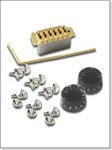

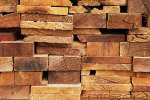
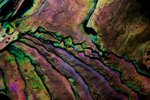
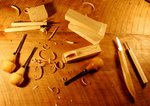



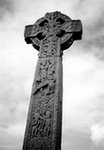












No comments:
Post a Comment